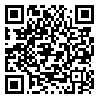Volume 5, Issue 1 (1-2001)
IBJ 2001, 5(1): 39-45 |
Back to browse issues page
Download citation:
BibTeX | RIS | EndNote | Medlars | ProCite | Reference Manager | RefWorks
Send citation to:



BibTeX | RIS | EndNote | Medlars | ProCite | Reference Manager | RefWorks
Send citation to:
Shaebani A A, McMaster R W, Shahbazzadeh D, Karimi M, Mahboudi F. Expression of Gp63 Gene from NIH Strain of Leishmania major in Pichia pastoris. IBJ 2001; 5 (1) :39-45
URL: http://ibj.pasteur.ac.ir/article-1-624-en.html
URL: http://ibj.pasteur.ac.ir/article-1-624-en.html
Ali Akbar Shaebani 
 , Robert W. McMaster
, Robert W. McMaster 
 , Delavar Shahbazzadeh
, Delavar Shahbazzadeh 
 , Mohsen Karimi
, Mohsen Karimi 
 , Fereidoun Mahboudi *
, Fereidoun Mahboudi * 


 , Robert W. McMaster
, Robert W. McMaster 
 , Delavar Shahbazzadeh
, Delavar Shahbazzadeh 
 , Mohsen Karimi
, Mohsen Karimi 
 , Fereidoun Mahboudi *
, Fereidoun Mahboudi * 

Abstract:
Leishmaniasis is a major infectious disease of considerable public health in more than 86 countries around the world. Several approaches toward vaccine development against this disease have been taken. Glycoprotein (gp63) is conserved among diverse species of Leishmania and has induced immunological responses in murine models. Therefore, this glycoprotein has been considered as a second generation vaccine for Leishmaniasis and for potential diagnostic antigen. Recombinant vaccine using gp63 in cocktail form is one of the candidates. Since, Pichiapastoris expression system is similar to that of the eukaryotic genes, refolding and glycosylation aspects of the expressed protein, gp63 gene from NIH strain of L. major cloned into BamHI site of pHIL-S1 as yeast expression vector (shuttle vector). This vector carries sequences of acid phosphatase (PHO1) signal peptide from yeast. The construction transfected into the P. pastoris using lithium chloride method. Recombinant clones were screened on histidin minus media. The expression of rgp63 was studied by methanol after induction. The expressed recombinant protein was confirmed by Western blotting and electron microscopy. The expression level of rgp63 was more than 30%. Since the rgp63 expression in P. pastoris was active in SDS-PAGE gelatin gel, therefore it should be very similar to the native form.
Type of Study: Full Length/Original Article |
| Rights and permissions | |
 |
This work is licensed under a Creative Commons Attribution-NonCommercial 4.0 International License. |





.png)
